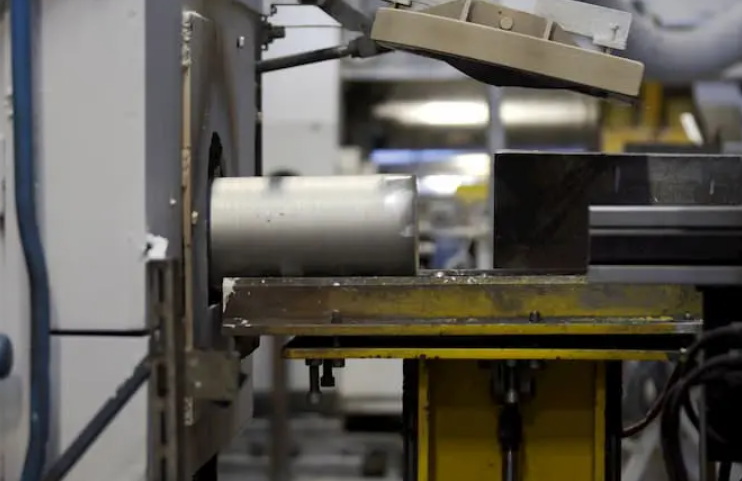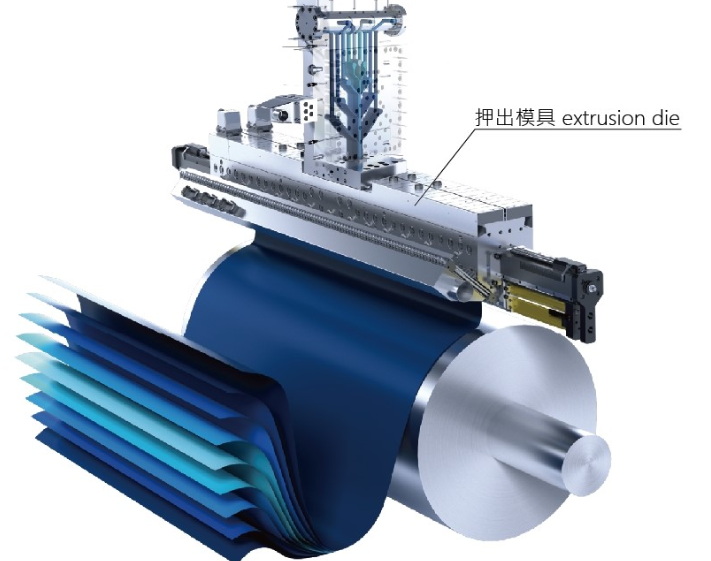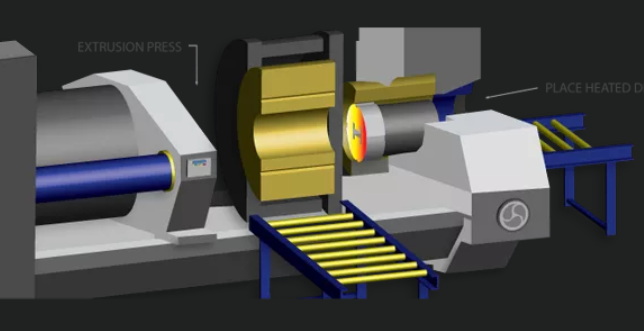Content Menu
● Introduction to Extrusion Processes
>> Plastic Extrusion
>> Metal Extrusion
● Machinery and Tooling in Extrusion Processes
>> Extrusion Machinery
>> Tooling for Extrusion
● Downloading Free Templates for Extrusion Processes Machinery Tooling
>> Plastic Extrusion Templates
>> Metal Extrusion Templates
● Recent Advancements in Extrusion Machinery
● Role of Technology in Extrusion Processes
>> Industry 4.0 and Extrusion
>> Simulation Tools for Extrusion
● Future Trends in Extrusion Technology
>> Emerging Materials and Applications
>> Additive Manufacturing in Extrusion
● Conclusion
● FAQs
>> 1. What are the main types of extrusion processes?
>> 2. How does tooling impact the extrusion process?
>> 3. What are some recent advancements in extrusion machinery?
>> 4. How does Industry 4.0 impact extrusion processes?
>> 5. What role does simulation play in extrusion processes?
● Citations:
Extrusion processes are a crucial part of manufacturing, involving the shaping of materials like plastics or metals through dies to create specific profiles. The machinery and tooling involved in these processes are complex and require precise design and management. Templates can be incredibly useful for streamlining these processes, ensuring efficiency and consistency in production. In this article, we will explore whether it is possible to download free templates for extrusion processes machinery tooling and delve into the various aspects of extrusion processes.

Introduction to Extrusion Processes
Extrusion is a manufacturing process used to create objects of a fixed cross-sectional profile. It involves forcing raw material through a die to produce a continuous shape. This process is widely used in both plastic and metal manufacturing.
Plastic Extrusion
Plastic extrusion involves heating plastic pellets until they melt and then forcing them through a die to create the desired shape. Common products made through plastic extrusion include pipes, tubing, and packaging materials. The process involves several key steps:
1. Material Preparation: Plastic pellets are fed into the extruder.
2. Melting: The pellets are melted by heat from the extruder's barrel.
3. Forming: The molten plastic is pushed through a die to achieve the desired shape.
4. Cooling: The extruded product is cooled to solidify its shape.
Metal Extrusion
Metal extrusion, particularly aluminum extrusion, involves heating metal billets and forcing them through a die to create profiles like rods, bars, or complex shapes. This process is used in various industries, including construction and automotive. The metal extrusion process includes:
1. Billet Preparation: Metal billets are prepared for extrusion.
2. Heating: The billets are heated to make them malleable.
3. Extrusion: The heated billet is forced through a die to create the desired shape.
4. Cooling and Finishing: The extruded product is cooled and may undergo additional processing for enhanced properties.
Machinery and Tooling in Extrusion Processes
The machinery used in extrusion processes includes extruders, dies, and various control systems. Tooling refers to the dies and molds that shape the extruded material.
Extrusion Machinery
- Extruders: These are the core machines that melt and push the material through the die. They can be single-screw or twin-screw, depending on the material and desired output. Modern extruders often feature advanced control systems for precise temperature and pressure management.
- Dies: These are the molds through which the molten material is forced to achieve the desired shape. Dies can be simple or complex, depending on the product being manufactured. Proper die design is crucial for achieving precise dimensions and surface finishes.
Tooling for Extrusion
Tooling in extrusion includes the design and manufacture of dies and molds. Proper tooling is crucial for achieving precise dimensions and surface finishes. Modern tooling systems are designed to be versatile, allowing for the production of a wide range of profiles and sheets. The durability of tooling ensures consistent performance over time, impacting the quality and efficiency of the extrusion process.
Downloading Free Templates for Extrusion Processes Machinery Tooling
While specific free templates for extrusion machinery tooling might be limited, there are resources available that can aid in designing and managing extrusion processes. For instance, software templates for controlling extrusion processes can be found, which help in managing temperature zones, motor control, and melt pumps.
Plastic Extrusion Templates
For plastic extrusion, templates can be used to manage production schedules, resource allocation, and project planning. These templates are often available in Excel or Word formats and can be customized to fit specific manufacturing needs. They help streamline operations by providing a structured approach to production management.
Metal Extrusion Templates
For metal extrusion, templates might focus more on the design of dies and the setup of extrusion presses. These can include CAD designs or process control templates. Such templates aid in optimizing the extrusion process by ensuring precise control over variables like temperature and pressure.

Recent Advancements in Extrusion Machinery
Recent advancements in extrusion machinery focus on efficiency, precision, and sustainability. Innovations include:
- Differential Velocity Sideways Extrusion (DVSE): This method allows for the creation of curved metal profiles with enhanced strength, ideal for aerospace and automotive applications.
- Supercritical Fluid Extrusion (SCFX): This technique uses supercritical CO2 to create unique textures and preserve nutrients in food products, also applicable in biodegradable materials.
- 3D Printing Integration: Combining 3D printing with extrusion enables customized, complex shapes in polymers and metals, enhancing prototyping and small-scale production.
- Energy Efficiency and Sustainability: New extruders reduce energy consumption and incorporate renewable energy sources, supporting sustainable manufacturing practices.
- Precision Extrusion Technology: Advanced controls improve temperature, pressure, and speed management, delivering tighter tolerances for high-precision applications like medical devices and electronics.
Role of Technology in Extrusion Processes
Technology plays a pivotal role in enhancing the efficiency and precision of extrusion processes. Modern extrusion machinery features advanced control systems, such as programmable logic controllers (PLCs), which provide real-time monitoring and control of process parameters. This level of control reduces waste and improves overall production efficiency.
Industry 4.0 and Extrusion
The integration of Industry 4.0 technologies, including AI, machine learning, and IoT, has transformed the extrusion process. These technologies enable real-time monitoring, predictive maintenance, and data analysis, which not only improve efficiency but also minimize downtime and potential errors.
Simulation Tools for Extrusion
Simulation tools like Altair Inspire Extrude Metal allow engineers to simulate extrusion processes virtually. This helps in detecting potential defects before actual production, reducing product development costs and improving extrusion quality. Such tools are invaluable for optimizing process variables and ensuring consistent product quality.
Future Trends in Extrusion Technology
The future of extrusion technology holds exciting prospects with ongoing innovations in sustainable materials, additive manufacturing, and smart manufacturing. The integration of 3D printing with extrusion processes will continue to enable more complex designs and customization. Additionally, the emphasis on sustainability will drive the development of energy-efficient extruders and the use of biodegradable materials.
Emerging Materials and Applications
There is a growing demand for new materials and applications in modern extrusion. From biodegradable plastics to high-performance composites, these materials offer unique properties and potential applications, driving the continuous evolution of extrusion technology.
Additive Manufacturing in Extrusion
The rise of additive manufacturing, particularly 3D printing, is opening up new possibilities for extrusion. This combination allows for the creation of complex geometries and customized products, which cannot be achieved through traditional extrusion methods alone.
Conclusion
While specific free templates for extrusion machinery tooling might not be widely available, there are numerous resources and software that can aid in managing and optimizing extrusion processes. Understanding the machinery and tooling involved is crucial for efficient production. For those interested in extrusion processes, exploring software templates and educational videos can provide valuable insights.

FAQs
1. What are the main types of extrusion processes?
Answer: The main types of extrusion processes include plastic extrusion (e.g., profile extrusion, blown film extrusion) and metal extrusion (e.g., hot extrusion, cold extrusion).
2. How does tooling impact the extrusion process?
Answer: Tooling, particularly dies and molds, ensures accuracy and precision in the extrusion process. It determines the shape, size, and quality of the finished products, contributing to efficient operations and reducing errors.
3. What are some recent advancements in extrusion machinery?
Answer: Recent advancements include Differential Velocity Sideways Extrusion (DVSE), Supercritical Fluid Extrusion (SCFX), integration with 3D printing, energy-efficient designs, and precision extrusion technology.
4. How does Industry 4.0 impact extrusion processes?
Answer: Industry 4.0 technologies, such as AI and IoT, enhance efficiency and precision by enabling real-time monitoring, predictive maintenance, and data analysis, thus minimizing downtime and errors.
5. What role does simulation play in extrusion processes?
Answer: Simulation tools allow engineers to virtually test and optimize extrusion processes, reducing product development costs and improving product quality by detecting potential defects early in the design phase.
Citations:
[1] https://jieyatwinscrew.com/blog/exploring-extrusion-equipment/
[2] https://uplastech.com/advancements-extrusion-machinery/
[3] https://paulmurphyplastics.com/industry-news-blog/extrusion-process-working-types-application-advantages-and-disadvantages/
[4] https://engitech.in/extrusion-machines-and-extruders-guide/
[5] https://altair.com/inspire-extrude-metal
[6] https://www.jwellmachine.com/analysis-of-plastic-extrusion-technology/
[7] https://www.yjing-extrusion.com/what-are-the-latest-innovations-in-automatic-extrusion-machines.html
[8] https://www.kubotekkosmos.com/company/case-studies/keycreator/southeastern
[9] https://www.lubrizol.com/-/media/Lubrizol/Health/Literature/LSP-Extrusion-Guide.pdf
[10] https://www.qform3d.com/products/qformextrusion
[11] https://books.google.com/books/about/Extrusion.html?id=sPBTAAAAMAAJ
[12] https://www.yjing-extrusion.com/what-are-the-latest-trends-in-the-extrusion-machinery-market.html
[13] https://en.hfiltration.com/case-studies/dust-and-dry-fumes/dust-treatment-in-the-production-of-extrusion-machines
[14] https://www.lightmetalage.com/news/industry-news/extrusion/material-selection-for-extrusion-tooling/
[15] https://www.giggleserp.com/extrusion-industry
[16] https://www.lernermoldedplastics.com/the-comprehensive-guide-to-advanced-extrusion-techniques/
[17] https://www.globenewswire.com/news-release/2025/02/05/3021359/0/en/Plastic-Extrusion-Machine-Market-to-Grow-at-4-7-CAGR-During-2025-2035-Boosting-Global-Industry-to-USD-12-343-2-Million-by-2035-Future-Market-Insights-Inc.html
[18] https://aptyx.com/case-studies/innovative-extrusion-process-for-heated-breathing-circuit/
[19] https://www.condaleplastics.com/extrusion-advice/10-considerations-for-good-quality-extrusion-design/
[20] https://www.scconsultants.com/en/ludovic-twin-screw-simulation-software.html






















